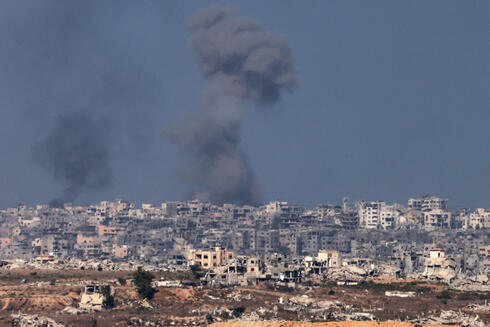By Yoav Zitun
Copyright ynetnews

After consecutive days of targeting high-rise buildings and the southward evacuation of hundreds of thousands of Gaza residents, the IDF launched significant airstrikes Monday as a final preparation before infantry, armor and combat engineering units entered the city overnight. Palestinians reported a “belt of fire” in the northwest of Gaza City, with video footage showing large areas lit orange from the strikes. Explosions were reportedly felt as far as central Israel and the Sharon region. The IDF confirmed Tuesday morning that the ground phase of Operation Gideon’s Chariots II had begun, with the first battalion-level teams entering the dense urban terrain that remains after Rafah and Khan Younis were largely flattened. Most of the soldiers leading the operation are young recruits from regular battalions who were in high school on October 7, 2023. Their phones were confiscated overnight, and strict operational security orders were given at assembly points, emphasizing no use of personal devices. The precaution reflects the ongoing threat posed by Hamas, which continues to observe, listen and adapt nearly two years into the conflict. Soldiers were briefed to expect about a month operating in Gaza without returning home, moving between targeted buildings in search-and-clear missions. In a Sunday evening briefing, Prime Minister Benjamin Netanyahu met with senior ministers and military officials. IDF Chief of Staff Lt. Gen. Eyal Zamir warned that the upcoming maneuver to capture Gaza City would exact a heavy toll, with dozens of soldiers expected to be killed, though he did not provide exact figures. Netanyahu countered that intelligence assessments suggest the operation will increase pressure on Hamas and potentially determine the course of the campaign. Zamir also cautioned that hostages’ safety would be at heightened risk, urging urgent political action to advance a hostage deal. The IDF views Gaza City’s Hamas command as a well-organized force, protected by extensive underground bases and tunnel networks either undetected or reconstructed after last year’s initial operations. Tactically, the mission remains consistent with previous urban maneuvers: identify and neutralize Hamas strongpoints above and below ground. While the IDF does not aim to locate and eliminate every fighter or weapon, the goal is to degrade Hamas’ capabilities. Hamas continues to rely on guerrilla tactics, relocating thousands of operatives to less populated areas along the congested coastal corridor. Small units left behind are expected to rotate, attempting ambushes on IDF forces. For the first time, IDF units trained to operate simultaneously above and below ground. “At the start of the war, entering tunnels was prohibited only elite units could operate underground,” a senior ground forces officer told Ynet and its sister publication Yedioth Ahronoth. “From last year’s Khan Younis maneuver, we learned a different approach is necessary. We cannot leave the enemy a safe zone.” The IDF plans to systematically clear buildings above detected tunnels, unlike in previous operations where structures were left intact. During Operation Gideon’s Chariots I, the paratroopers alone demolished 2,137 multi-story buildings in two eastern Khan Younis neighborhoods over several months. Any key tunnel access points will be isolated, scanned and cleared carefully, with pursuit operations conducted as needed. Special kits were distributed to troops in preparation for detecting explosive devices hidden by Hamas, hundreds to thousands of booby traps planted in buildings, streets, intersections and alleys. While RPGs and sniper capabilities are limited, Hamas is expected to focus on improvised explosive devices, including unexploded Israeli munitions. New drone technology, including “Bat” suicide drones, has already killed hundreds of Hamas operatives this year. Lt. Gen. Zamir emphasized to commanders: “This is not a rush job. Operate methodically, thoroughly, and smartly. Force protection takes precedence over speed.” The operation is expected to continue through the holiday period, with some training battalions participating briefly so as not to disrupt ongoing officer and non-commissioned officer training. The IDF anticipates completing this phase by January, ahead of Gideon’s Chariots III. Even in the best-case scenario, Hamas is not expected to be decisively defeated, as political leadership has yet to define an alternative governing arrangement for Gaza’s two million residents. Zamir warned that military achievements may be limited without a political resolution. Southern Command has maintained strict operational secrecy, keeping commanders and troops away from public exposure. Interviews will be limited and tightly controlled, reflecting the high-risk environment, internal mistrust between the IDF chief of staff and political leadership, and the ongoing threat to hostages in Gaza. “Soldiers are highly motivated at the start, especially those crossing the border for the first time,” IDF officers said. “We hope intelligence on the hostages’ location is accurate.”



